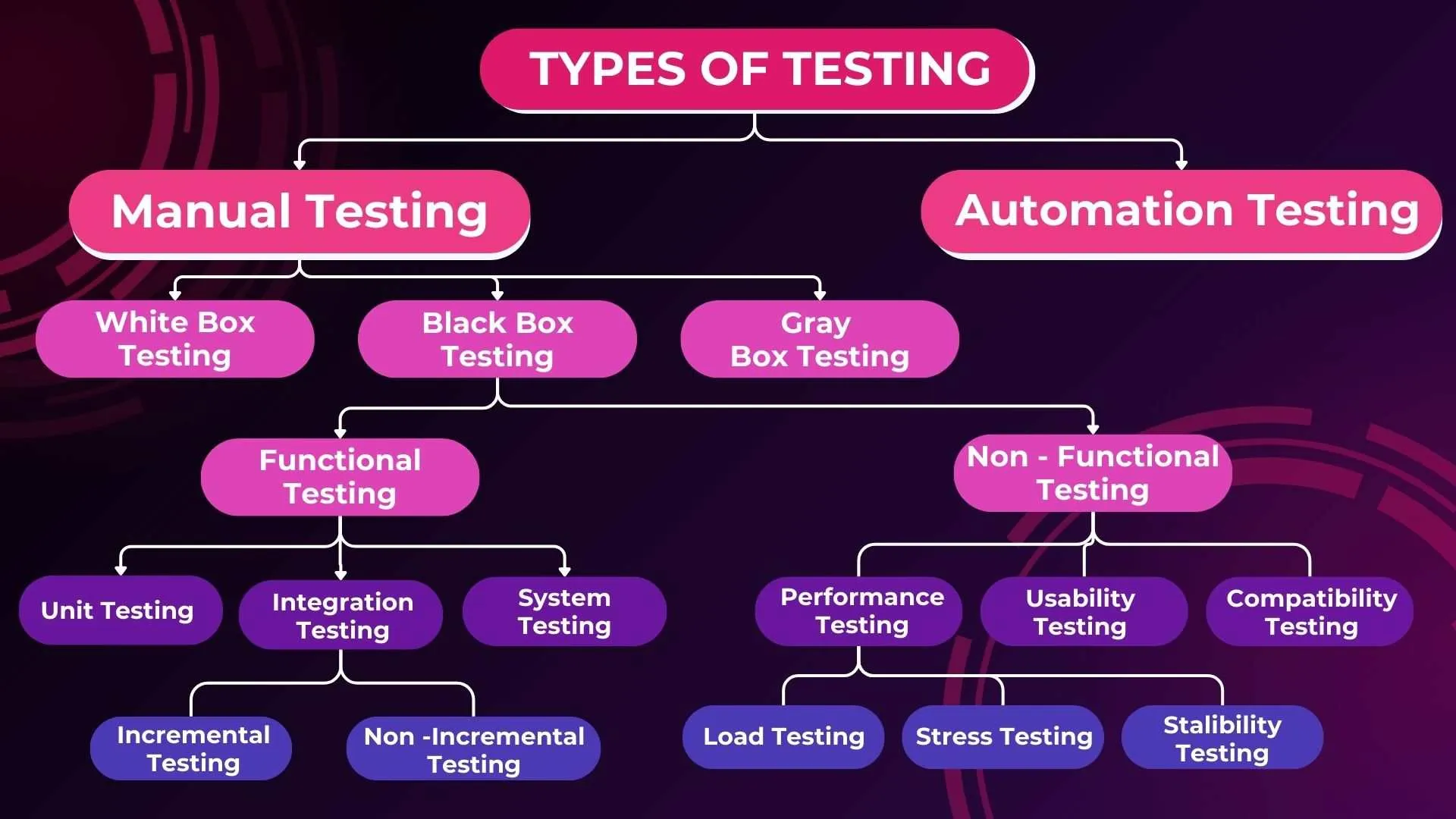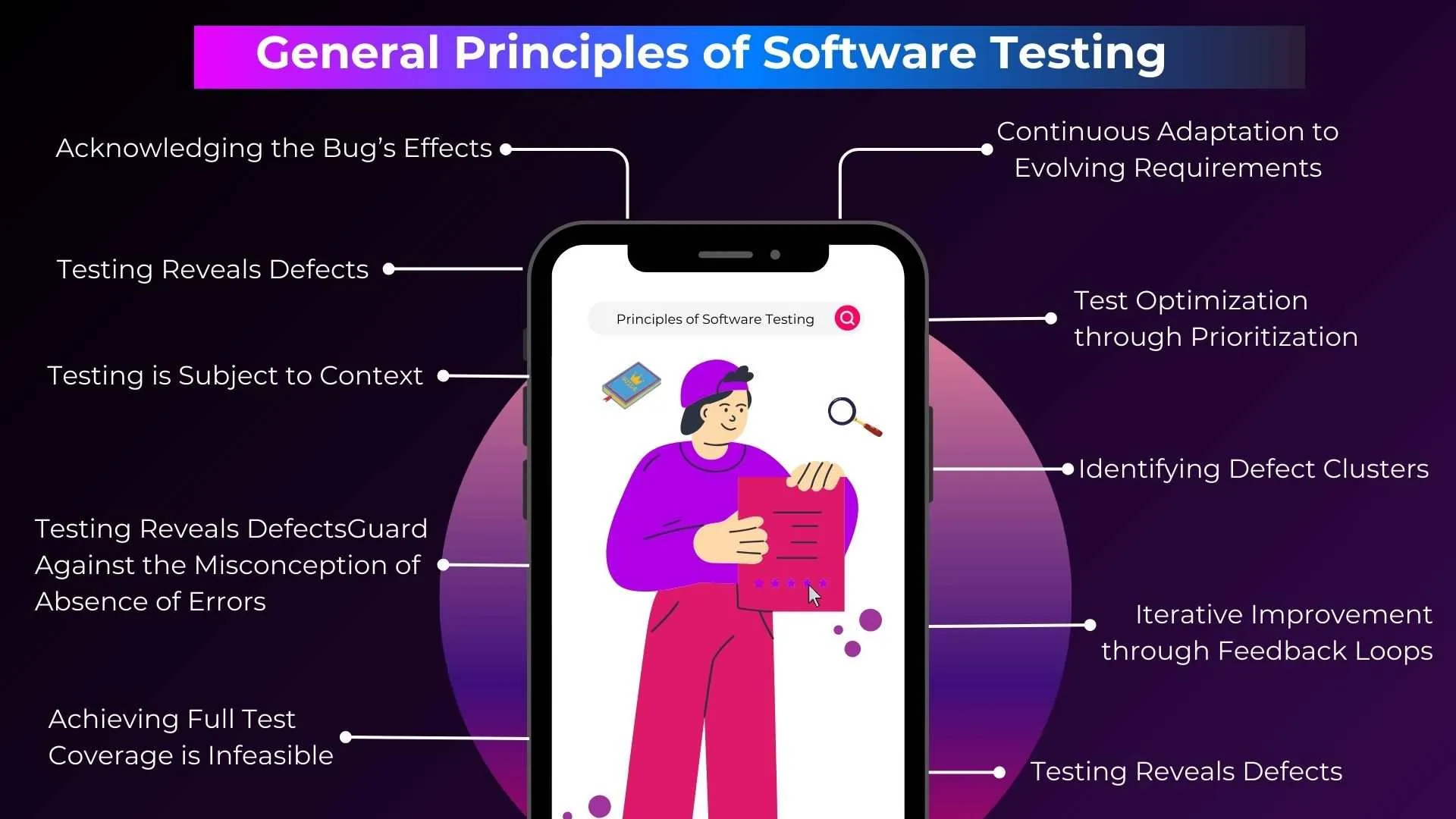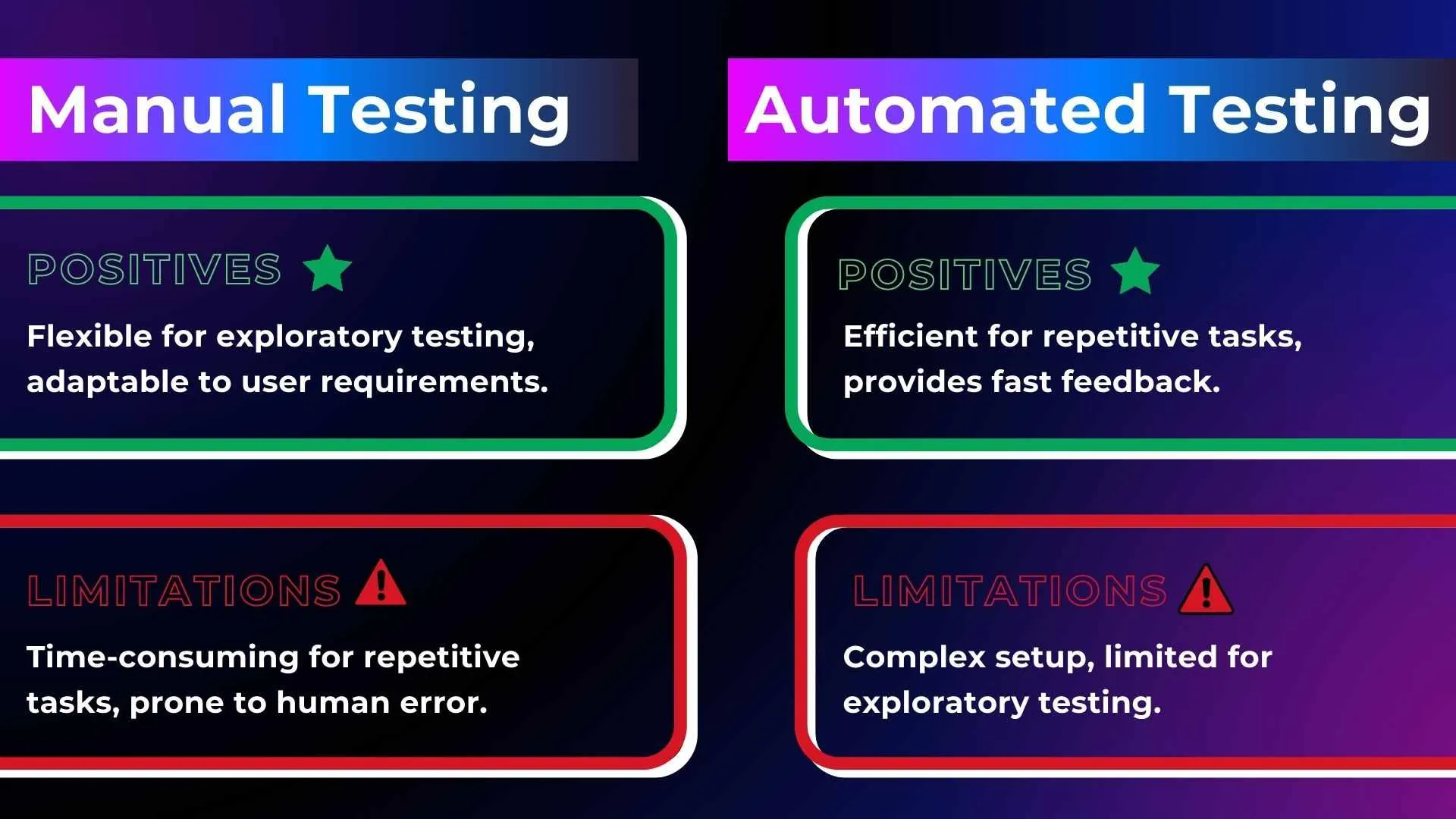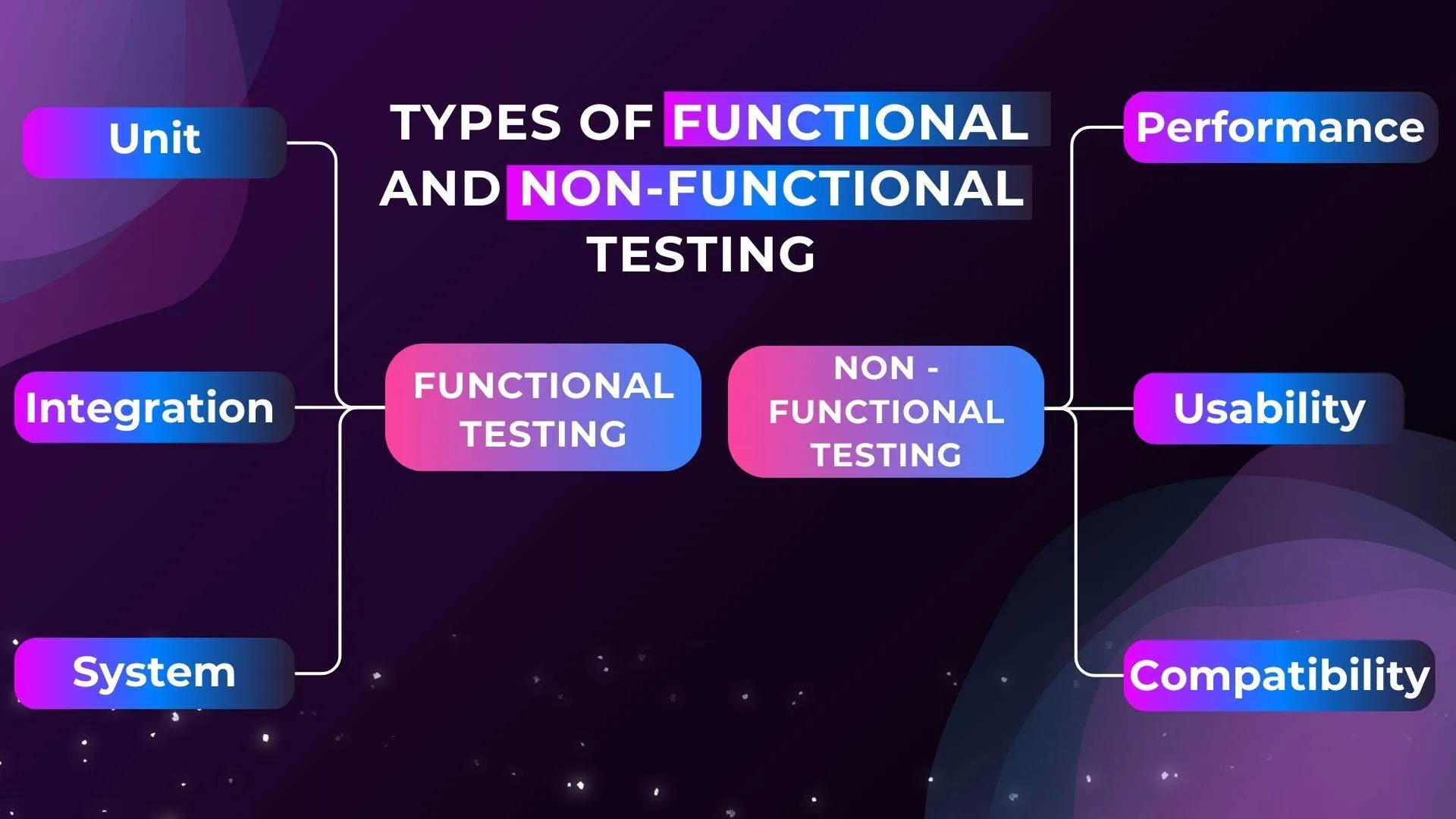Ever wondered why Software Testing covers so many methods? Step into the realm of software testing in 2024, where we'll dive into various testing techniques and introduce advanced tools 🛠️ to enhance your testing prowess.
Did you know that a software glitch in 2012 cost the Knight Capital Group over $400 million in just 45 minutes? Testing helps prevent disasters like this and ensures software works smoothly.
However, there isn’t a single defined method for testing. Let's understand how professionals use these to deliver great quality assurance.

What are the different categories of software testing?

I get that the number 💯 might seem overwhelming, but hang in there with me. We'll break it down by focusing on the most common practices in a straightforward way, covering the following points 🎯
➡️️ Ever heard of the Principles of Testing? We'll dive into that first, laying the groundwork for our testing journey
➡️ Next, We’ll Dwell upon Manual and Automated Testing
➡️ Touch upon Functional and Non-functional Testing
➡️ Understanding the significance of Black Box Testing and the essense of Integration Testing
➡️ Exploring the world of Performance Testing and many more…
Principles of Testing
Let's dive into the core principles of software testing, serving as our roadmap through the complexities of testing strategies and methodologies. These principles form the foundation for reliability and excellence in navigation. They equip us with the best testing strategies and techniques, promoting confident product releases ⛳

Applying these principles enhances testing efficiency, aligning with client needs and improving overall strategy♟️. Integrating them unlocks maximum efficiency, vital for superior software quality.
Different types of software testing
So, you've got the principles down, now let's talk testing types. Manual and Automated are the two of the major Software testing processes.
1 👷 Manual testing
This methodology involves human testers meticulously exploring the software, clicking buttons, inputting data and observing the system's response. It is highly detailed and allows testers to apply their intuition and creativity to uncover potential issues.
2 🤖 Automated Testing

Automation Process utilizes specialized software testing tools to execute pre-scripted tests automatically. These tests are designed to simulate user interactions with the software, such as clicking buttons, entering text and validating results. Some popular Automated Software testing tools are Selenium, Appium

Types of Manual Testing

Now that we've covered the basics of manual and automated testing, let's zoom in on the former and its various flavors.
3 ◻️ White Box Testing
White Box Testing technique dives deep into the internal workings of the software, examining the code and logic behind the user interface. It allows testers to uncover hidden bugs and vulnerabilities that may not be apparent from the outside.
4 ◼️ Black Box Testing
Unlike White Box Testing, Black Box Testing focuses solely on the external behavior of the software, without any knowledge of its internal structure. Testers interact with the software as end-users would, clicking buttons, inputting data and verifying outputs.
Understanding Black Box Testing is crucial as it sheds light on potential human errors that could lead to overlooked defects, highlighting the importance of thorough testing methodologies.
5 🔲 Gray Box Testing
This combines elements of both White Box and Black Box Testing. Testers have partial knowledge of the internal workings of the software, allowing them to design more targeted tests while still maintaining a user-centric perspective. Gray Box Testing strikes a balance between depth and breadth, offering a holistic view of the software's quality.
Some common types of functional and non-functional testing

🚀 Common methods between Functional and Non-Functional testing include regression testing, which ensures that new changes don't adversely affect existing functionalities or performance. Additionally, both types often involve user acceptance testing (UAT), where end-users validate the software's functionality and usability.
Moreover, both functional and non-functional testing may utilize smoke testing, which checks if the basic functionalities or critical components of the software work as expected before proceeding with comprehensive testing.
Types of Functional Testing
6 - Software Unit Testing 1️⃣
This is a traditional testing approach which occurs at an earlier stage in the Software Development Life Cycle. It entails manually testing individual units to ensure functionality and detect defects promptly

7 - Software Integration Testing 🔗
A vital phase in the testing cycle, requires technical skill to assess the interaction between individual software modules and ensure seamless operation.
8 - Software System Testing 💾
System testing evaluates the complete software system's functionality and performance, ensuring it meets specified requirements. It requires meticulous attention to detail and thorough testing of all system components

Types of Non-functional Testing
9 - Performance Testing 🚀
This critical type assesses the software's responsiveness, scalability and stability under varying load conditions. It ensures that the software performs optimally, even when subjected to high user traffic or extensive data processing.
10 - Usability Testing
Usability testing focuses on assessing the software's user-friendliness and ease of use. It explores how intuitively users can navigate through the software interface, interact with features and accomplish tasks.
11 - Compatibility Testing
Compatibility testing verifies that the software functions seamlessly across different platforms, devices, browsers and operating systems. It ensures that the software maintains consistent performance and functionality regardless of the environment in which it is accessed, enhancing its accessibility and usability for a diverse user base.
In the Software Testing Market, popular tools like JMeter for performance testing, UserTesting for usability testing and BrowserStack for compatibility testing help in ensuring that our software is functional, user-friendly and can be integrated smoothly with other systems.
Types of Black Box Testing

Types of Integration Testing
14 - Incremental Integration Testing 📈
Here we integrate individual components into larger modules, testing each integration step by step. This iterative process allows us to identify and address issues early on, ensuring a smoother transition as the software evolves.
15 - Non-Incremental Integration Testing 🐢
Unlike its incremental counterpart, non-incremental integration testing takes a more holistic approach. Here, we integrate all components simultaneously and test the system as a whole. While this approach may require more resources upfront, it allows us to assess the software's overall functionality and interoperability in one go.
4 Types of Performance Testing

When it comes to ensuring your software performs at its peak, performance testing is your ultimate ally. Let's delve into its various types and how they can transform your software:
16 - Load Testing 🏋️
This technique focuses on the behavior of a system that is evaluated under specific anticipated loads, simulating real-world conditions. It helps identify performance bottlenecks, assess system scalability and ensure optimal functioning under expected user loads.
17 - Stress Testing 🤯
It evaluates how a software system performs under extreme conditions, such as high loads or resource constraints. It aims to identify the system's breaking point and ensure it can handle unexpected spikes in usage without crashing or compromising performance.
18 - Scalability Testing📏
This prioritizes the system's ability to handle increasing amounts of workload or data without compromising performance. It aims to determine the system's capacity to scale up or down effectively in response to changing demands, ensuring smooth operation as user numbers or data volume grow.
19 - Stability Testing⚖️
Stability testing assesses how stable and reliable a software application is over an extended period, ensuring it performs consistently without unexpected crashes or errors. It involves subjecting the software to prolonged usage under varying conditions to identify any stability issues.
Other types of testing
Alright, let's do a quick speedrun📝 of the remaining software testing methods. The exact number can vary depending on factors such as specific industry requirements and the constant evolving testing methodologies.
20 - Alpha Testing: Evaluates the software product internally before limited release to identify bugs.
21 - End-to-End Testing: Validates data flow throughout the system's life cycle.
22 - Exploratory Testing: Simultaneously learns and tests to uncover defects in the application.
23 - Ad Hoc Testing: Informally tests without plan to uncover system defects.
24 - Accessibility Testing: Ensures usability for users with disabilities.
25 - Security Testing: Identifies system vulnerabilities and security issues.
26 - Volume Testing: Assesses system performance under large data volumes.
27 - Cross-Browser Testing: Validates functionality across various browsers.
28 - Cross-Platform Testing: Ensures compatibility across different operating systems.
29 - Installation Testing: Checks installation, update and uninstall processes.
30 - Configuration Testing: Assesses functionality under different configurations.
31 - Recovery Testing: Evaluates system recovery from crashes and failures.
32 - Reliability Testing: Validates consistency under varied conditions.
33 - Maintainability Testing: Assesses ease of maintenance.
34 - Portability Testing: Ensures transferability between environments.
35 - Localization Testing: Verifies suitability for different regions.
36 - Globalization Testing: Ensures support for multiple languages.
37 - Internationalization Testing: Assesses readiness for global markets.
38 - Boundary Testing: Checks behavior at input boundaries.
39 - Equivalence Partitioning: Reduces test cases while ensuring coverage.
40 - State Transition Testing: Verifies transitions between system states.
41 - Decision Table Testing: Creates matrices to systematically test scenarios.
42 - Error Guessing: Identifies defects based on intuition and experience.
43 - Fuzz Testing: Utilizes randomized input to systematically probe for potential vulnerabilities.
44 - Mutation Testing: Introduces code changes to assess test effectiveness.
45 - Model-Based Testing: Uses models to automatically generate test cases.
46 - Data-Driven Testing: Executes test cases based on external data sources.
47 - Monkey Testing: Randomly interacts to uncover unexpected behavior.
48 - API Testing: Validates functionality, reliability and security of APIs.

49 - Web Services Testing: Evaluates performance and functionality of web services.
50 - Mobile Application Testing: Ensures functionality across mobile devices.
51 - Network and Cybersecurity Testing: Evaluates network communication and security.
52 - GUI Testing: Verifies graphical user interface functionality.
53 - Exhaustive Testing: Aims for thorough test coverage.
54 - Early Testing: Detects defects early in the development cycle.
55 - Regression Testing: Verifies recent code changes do not impact existing functionality.

56 - Soak Testing: Evaluates performance under prolonged normal conditions.
57 - User Acceptance Testing (UAT): Involves actual users to ensure requirements are met.
58 - Beta Testing: Gathers feedback from actual users before release.
59 - Documentation Testing: Validates accuracy and comprehensiveness of documentation.
60 - Scenario Testing: Simulates real-world scenarios to test functionality.
61 - Concurrency Testing: Evaluates performance under multiple simultaneous users or processes.
62 - Security Testing: Assesses defenses against unauthorized access.
63 - Penetration Testing: Exploits vulnerabilities to identify and mitigate weaknesses.
64 - Vulnerability Testing: Identifies potential weaknesses in code, configuration or design.
65 - Static Testing: Analyzes code and documentation without execution.
66 - Dynamic Testing: Evaluates behavior during execution.
67 - Code Coverage Testing: Measures code executed by test cases.
68 - Compliance Testing: Ensures compliance with industry standards and regulations.
69 - Recovery Testing: Assesses recovery after disruptions.
70 - Backward Compatibility Testing: Verifies compatibility with previous versions.
71 - Forward Compatibility Testing: Ensures compatibility with future versions.
72 - Conformance Testing: Validates adherence to specifications and standards.
73 - Spike Testing: Assesses performance under sudden load increases.
74 Parallel Testing: Speeds up testing by executing multiple test cases simultaneously.
75 - A/B Testing: Compares different versions for performance.
76 - Boundary Value Testing: Tests behavior at input boundaries.
77 - Continuous Integration Testing: Verifies frequent integration and testing.
78 - Split Testing: Compares variations of features or designs.
79 - Continuous Deployment Testing: Ensures automated deployment of code changes after testing.
80 - Smoke Testing: Quickly checks basic functionality.
81 - Cross-Site Scripting Testing: Detects and prevents malicious script injections.
82 - Cross-Site Request Forgery Testing: Identifies and mitigates security vulnerabilities.
83 - SQL Injection Testing: Assesses vulnerability to SQL injection attacks.
84 - Risk-Based Testing: Prioritizes test cases based on risk.
85 - Real-Time Testing: Verifies real-time processing capabilities.
86 - Blockchain Testing: Evaluates functionality, security and performance.
87 - Cloud Testing: Assesses performance and reliability in cloud environments.
88 - Control Flow Testing: Verifies control flow functionality.
89 - Dynamic Analysis Testing: Analyzes behavior during execution.
90 - Endurance Testing: Evaluates stability under sustained load or stress.
91 - Bucket Testing: Compares user preferences or behaviors with different versions.
92 - Negative Testing: Assesses resilience to invalid inputs or unexpected conditions.
93 - Positive Testing: Validates expected behavior under valid inputs.
94 - Recovery Testing: Assesses recovery after disruptions.
95 - Robustness Testing: Evaluates ability to handle abnormal inputs or conditions.
96 - Gorilla Testing: Extensively tests critical parts of the system.
97 - Regression Testing: Ensures recent changes do not affect existing functionality.
98 - Stability Testing: Assesses reliability over time.
99 - Stress Testing: Evaluates behavior under extreme loads.
100 - Agile Testing: Prioritizes feedback and continuous improvement in lifecycle between development teams.

Wrapping up!
We've explored the core principles, manual and automated methods and a spectrum of methodologies like functional, non-functional, black box, integration and performance testing.
By employing testing metrics and automation tools, professionals can efficiently detect and report bugs, thereby refining user experiences and fortifying security measures. Agile testing methodologies underscore the importance of adaptability and user-centricity, syncing testing efforts with the dynamic routines of software development.
This comprehensive exploration equips practitioners in the software testing industry with the insights needed to navigate the complexities of modern software applications. With a deeper understanding of diverse testing techniques, they're better positioned to elevate user satisfaction, enhance system reliability and propel the industry forward with robust and resilient software solutions.

People also Asked
👉Tips for collaborating with developers when using various testing types
Effective collaboration with developers requires clear communication, understanding project goals and respecting expertise. Analytical skills help grasp developers' needs and offer valuable feedback. Regular meetings, bug report sharing and developer involvement in testing activities foster collaboration and alignment.
👉Emerging trends within the 100+ types of software testing
Staying updated on emerging trends in software testing is crucial for remaining competitive. Analytical skills aid in evaluating new methodologies and technologies. Trends like continuous integration, DevOps practices and AI-driven testing are shaping the future of testing.
👉Benefits of using a variety of testing types
Employing diverse testing types helps identify and mitigate various defects. Dynamic testing skills aid in selecting suitable types based on project needs, ensuring comprehensive test coverage.
👉How can we choose the right testing tools to support the use of various software testing types?
During the testing phase, selecting automation testing tools depends on project requirements, budget and team expertise. Evaluating tool features for testing type alignment is essential. Research, expert advice and proof-of-concept tests inform decisions, while integration and compatibility are crucial.





%201.webp)

